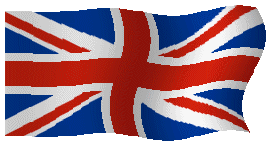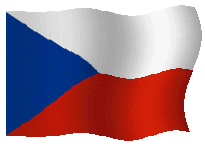EN: Very nice walk in the beautiful area of village Fornells. English version below.
ES: Muy agradable paseo en la hermosa zona de Fornells pueblo. La versión española más abajo.
CZ: Parádní procházka v krásné oblasti vesničky Fornells. Česká verze dole.
 FORNELLS
FORNELLS
Fornells (also known as Fournella) is a village located in a bay in the north of the Balearic island of Minorca, Spain. Fornells' native people are known as Fornellers in the Catalan language and in Spanish. The village was originally founded to serve the castle erected in the 16th century as a defence against the Barbary pirates for whom Fornells Bay provided the perfect safe haven. The castle was eventually demolished in the 18th century and all that is left of the military past of Fornells is the watch tower on the headland, outside the village. From there to the west Cavallería Cape can be seen, and to the east the massive bulk of Sa Mola, forming the eastern side of the entrance. In 1798 the village was a landing site during the Capture of Minorca by the British.

THE BIRTH OF MINORCA
The northern part of Minorca is the oldest piece of land in the whole of the Balearics. The union of its two parts to form the present island occurred in the late Cretaceous period (136 to 65 million years ago), and was brought about by a process of overlaying and folding.
The boundary-line between the two different geological zones roughly bisects the island from east to west, extending from Mahon in the east, through the small inland towns of Mercadal and Ferrerias, then turning north just short of the western port of Ciudadela to a point below Algaiarens.
The oldest Primary sediments in Minorca were laid down in the Silurian period (about 400 million years ago), and have been found at Mesquida and Fornells; but the matrix of the northern part of the island consists mainly of Primary Old Red Sandstone (Devonian), which occurs nowhere else in the Balearics. This is about 350 million years old, and its warm colour is quickly recognised as one travels across the island. The geological picture in the north is, however, complex and heterogeneous, as the Devonian strata have been much overlaid by younger rocks of the Secondary Triassic and Jurassic periods, usually of limestone. These areas often present a bleak and stark appearance, as at the Cap de Favaritx lighthouse, where one can imagine oneself on a lifeless planet.
FORNELLS RED SANDSTONE
Sandstone (sometimes also known as arenite) is a clastic sedimentary rock composed mainly of sand-sized minerals or rock grains. Most sandstone is composed of quartz and/or feldspar because these are the most common minerals in the Earth's crust. Like sand, sandstone may be any colour, but the most common colours are tan, brown, yellow, red, gray, pink, white and black. Since sandstone beds often form highly visible cliffs and other topographic features, certain colors of sandstone have been strongly identified with certain regions. Sandstone normally appears red due to the inclusion of iron oxides (hematite).
LOGGING REQUIREMENTS:
At the lookout point of Fornells you will observe these famous red sandstones more closely. In order to be able to log the cache, you have to answer following questions:
STAGE 1:
Here near the parking area you can see a sandstone:
A) List all colors of the stone.
B) What grain size is the sandstone?
C) Do you see quartz veins in the sandstone?
STAGE 2:
Here you see a large fortification.
D) Measure with your GPS: What is the altitude of the stage 2?
E) Can you see the highest mountain of Menorca "El Toro" from this place?
A task for volunteers: make a picture of Fornells or surroundings.
Please: send me an email with your answers immediately after you log "found it". Email: vonbronin@seznam.cz
Logs which will not comply with the requirements will be deleted.
If there ´s something wrong I will let you know. 
DO NOT WRITE YOUR ANSWERS TO THE LOG PLEASE! DO NOT ADD PHOTOS OF STAGES - THANK YOU!
Thank you and enjoy! 

FORNELLS
Fornells (también conocido como Fournella) es un pueblo situado en una bahía en el norte de la isla balear de Menorca, España. Fornells nativos son conocidos como Fornellers en catalán y en español. El pueblo fue fundado originalmente para servir el castillo construido en el siglo 16 como una defensa contra los piratas de Berbería para quien la bahía de Fornells siempre que el refugio perfecto. El castillo fue finalmente demolido en el siglo 18 y todo lo que queda del pasado militar de Fornells es la torre del reloj en la península, en las afueras del pueblo. Desde allí hacia el oeste del Cabo Cavallería se puede ver, y al este de la mole de Sa Mola, que forma el lado oriental de la entrada. En 1798 el pueblo era un lugar de aterrizaje durante la captura de Menorca por los británicos.

EL NACIMIENTO DE MENORCA
La parte norte de Menorca es la pieza más antigua de la tierra en el conjunto de las Islas Baleares. La unión de las dos partes para formar la actual isla se produjo en el período Cretácico tardío (hace 136 - 65 millones de años), y fue producida por un proceso de superposición y plegado.
La línea divisoria entre las dos zonas geológicas diferentes divide más o menos la isla de este a oeste, que se extiende desde Mahón, en el este, a través de los pequeños pueblos del interior de Mercadal y Ferrerias, luego girar al norte justo antes del puerto occidental de Ciudadela a un punto abajo Algaiarens.
Los sedimentos primarios más antiguos de Menorca se establecieron en el período Silúrico (hace 400 millones de años), y se han encontrado en Mesquida y Fornells, pero la matriz de la parte norte de la isla se compone principalmente de primaria arenisca roja antigua (Devónico) , que se produce en ningún otro lugar en las Islas Baleares. Se trata de unos 350 millones de años, y su color caliente es rápidamente reconocido como uno viaja por toda la isla. La imagen geológica en el norte, sin embargo, complejo y heterogéneo, ya que los estratos del Devónico se han superpuesto tanto por rocas más jóvenes de los períodos Triásico y Jurásico secundarios, por lo general de piedra caliza. Estas zonas suelen presentar un aspecto sombrío y severo, como en el Cap de Favaritx faro, donde uno se puede imaginar a sí mismo en un planeta sin vida.
FORNELLS ARENISCA ROJA
Arenisca (a veces también conocido como arenita) es una roca sedimentaria compuesta principalmente de minerales de tamaño de arena o granos de roca. La mayoría de la piedra arenisca se compone del cuarzo y / o feldespato porque éstos son los minerales más comunes en la corteza terrestre. Como la arena, arenisca puede ser de cualquier color, pero los colores más comunes son el beige, marrón, amarillo, rojo, gris, rosa, blanco y negro. Dado que a menudo se forman capas de arenisca acantilados altamente visibles y otras características topográficas, ciertos colores de la piedra arenisca se han identificado fuertemente con ciertas regiones. Arenisca normalmente aparece de color rojo debido a la inclusión de los óxidos de hierro (hematita).
REQUISITOS DE REGISTRO:
En el punto de Fornells mirador podrá observar más de cerca estos famosos areniscas rojas. Con el fin de ser capaz de iniciar la caché, lo que tienes que contestar las preguntas siguientes:
ETAPA 1:
Aquí, cerca de la zona de aparcamiento se puede ver una piedra arenisca:
A) Lista de todos los colores de la piedra.
B) Qué tamaño de grano es la piedra arenisca?
C) Puedes ver las vetas de cuarzo en la piedra arenisca?
ETAPA 2:
Aquí puede ver una gran fortificación.
D) Medida con su GPS: Cuál es la altura del escenario?
E) Se puede ver la montaña más alta de Menorca "El Toro" de este lugar?
Una tarea por voluntarios: hacer una foto de Fornells o alrededores.
Por favor: que me envíe un correo electrónico con sus respuestas immediamente después de iniciar sesión "encontró". Email: vonbronin@seznam.cz
Los registros que no cumplan con los requisitos serán eliminados.
Si hay algo mal voy a saber. 
NO ESCRIBA SUS RESPUESTAS AL DIARIO POR FAVOR! NO AGREGAR FOTOS DE ETAPAS - GRACIAS!
Gracias y disfruta! 

FORNELLS
Fornells je vesnička, která se nachází v zálivu na severu Baleárského ostrova Menorca. Ostrov patří Španělsku. Domorodci jsou známi jako Fornellers v katalánštině a ve španělštině. Vesnička byla původně založena jako zázemí hradu postaveném v 16.století, který sloužil jako obrana proti barbarským pirátům – záliv obyvatelům poskytoval perfektní bezpečí. Hrad byl zbořen v 18. století a jedinou zachovanou připomínkou vojenské minulosti z této doby je opevněná pozorovací věž na kopci před vesnicí. Z věže je možno dohlédnout na Cavallería Cape na západě a masivní část Sa Moly, která formuje přístup do přístavu z východu. V roce 1798 se vesnička stala přístavištěm při vylodění Britů na ostrově.

ZROZENÍ OSTROVA MENORCA
Severní část ostrova je nejstarší částí země na celých Baleárech. Ke spojení dvou částí tvořící současný ostrov došlo v pozdní křídě (před 136 až 65000000 lety) a bylo způsobeno procesy překrývání a skládání.
Hranice mezi oběma odlišnými geologickými oblastmi probíhá od Mahonu na východě přes málá vnitrozemská městačka Mercadal a Ferrerias a pak se obrací na sever těsně kolem západního přístavu Ciudadela k bodu pod Algaiarens.
Nejstarší primární sedimenty byly stanoveny v siluru (před 400 miliony let) a nalézají se v Mesquidě a Fornells. Ale základ severní části ostrova tvoří zejména červený pískovec (Devon), který se jinde na Baleárech nevyskytuje. Pískovec je asi 350 milionů let starý a jeho teplé odstíny barev při vašem putování ostrovem rychle rozpoznáte. Geologický obraz na severu je však složitý a heterogenní, protože devonské vrstvy byly překryty mladšími horninami středního triasu a jury, obvykle se jedná o vápence. Tyto oblasti často představují bezútěšný a ostrý vzhled, jako u majáku Cap de Favaritx, kde je možné si představit sám sebe na neživé planetě.
ČERVENÝ PÍSKOVEC VE FORNELLS
Pískovec (někdy také nazýváný arenit) je usazená hornina složená z minerálů velikosti písku nebo zrn hornin. Nejvíce se skládá s křemene a živce, protože tyto nerosty jsou nejvíce obsaženy v zemské kůře. Stejně jako písek může mít jakoukoliv barvu, ale nejčastějšími barvami jsou pálená, hnědá, žlutá, červená, šedá, růžová, bílá a černá. Vzhledem k tomu, že pískovcová lože často tvoří výrazné útesy a jiné topografické celky, některé barvy pískovce jsou úzce svázány s některými regiony. Pískovec obvykle působí červeně v důsledku vysokého obsahu oxidů železa (hematitu).
ÚKOLY PRO ÚSPĚŠNÉ ZALOGOVÁNÍ:
Na vyhlídce ve Fornells můžete spatřit slavné červené pískovce více z blízka. Abyste mohli úspěšně zalogovat tuto cache, musíte zodpovědět následující otázky:
STAGE 1:
Zde poblíž parkingu naleznete barevný pískovec:
A) Vyjmenujte barvy tohoto pískovce.
B) Jaká je zrnitost (velikost zrna) pískovce?
C) Má tento pískovec křemenné žíly?
STAGE 2:
Nacházíte se u velkého opevnění.
D) Měřte pomocí vaší GPS: Jaká je nadmořská výška stage 2?
E) Je z tohoto místa vidět nejvyšší hora Menorky „El Toro?
Úkol dobrovolný: připojte k logu fotku Fornells či blízkého okolí.
Prosím: zašlete mi email s vašimi odpověďmi ihned po zalogování "found it". Email: vonbronin@seznam.cz
Logy kačerů, kteří odpovědi nezašlou budou smazány!
Pokud se dopustíte nějaké chyby, ozvu se vám. 
SVÉ ODPOVĚDI, PROSÍM, NEPIŠTE DO LOGŮ! NEPŘIPOJUJTE ŽÁDNÉ FOTOGRAFIE STAGE!
Děkuji a přeji příjemný lov! 